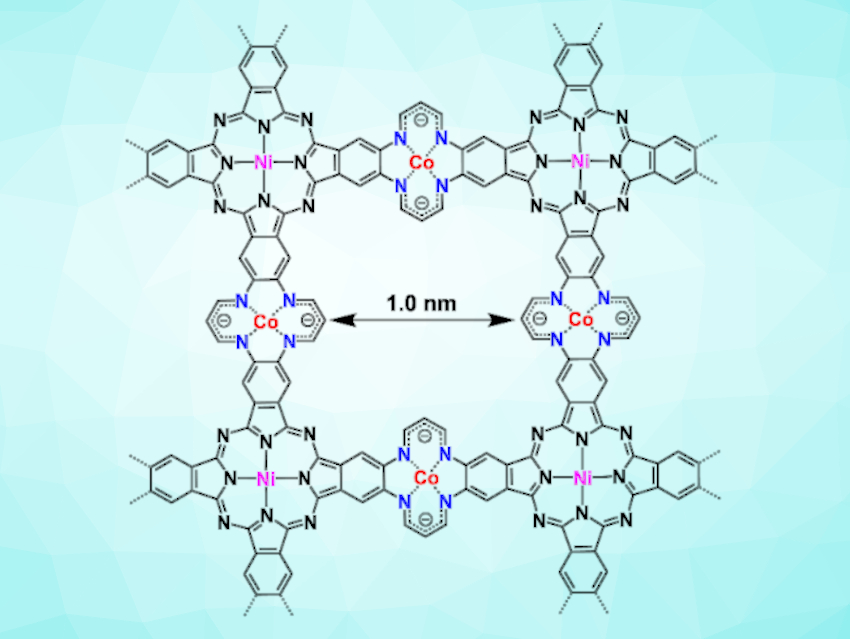Covalent organic frameworks (COFs) are porous crystalline polymers with a range of applications, e.g., in gas storage, gas separation, and catalysis. However, the low conductivity and carrier mobility of COFs have limited their use in optoelectronics and sensing. Conductive COFs in which insulation properties, such as low charge-transfer rates and response speeds, are minimized would, thus, be useful.
Ning Huang, Zhejiang University, Hangzhou, China, Hong-Cai Zhou, Texas A&M University, College Station, USA, and colleagues have developed a conductive two-dimensional COF, NiPc-CoTAA (pictured) that consists of nickel phthalocyanines linked by Co(II) tetraaza[14]annulene units. The framework was constructed under solvothermal conditions from nickel octaminophthalocyanine, tetramethoxypropane (TMP), and cobalt acetate tetrahydrate in the presence of triethylamine as catalyst at 120 °C. The planar structure of the resulting network leads to a layered COF structure, which was confirmed using powder X‐ray diffraction.
The team found that NiPc-CoTAA is a p‐type semiconductor with a charge carrier density of 2.14·1013 cm−3, a carrier mobility of 0.15 cm2 V s–1, and an electrical conductivity of up to 8.16·10−3 S m−1. In addition, the COF can be partially oxidized by iodine to form organic radicals. The resulting iodine-doped COF has an electrical conductivity of up to 0.52 S m–1, one of the highest values among reported 2D framework materials. To demonstrate the potential of the material for applications, the team prepared NiPc‐CoTAA thin films with tunable thicknesses from 100 to 1000 nm using a steam-assisted conversion method and used them as chemiresistive sensors for toxic gases, e.g., nitrogen dioxide.
- Conductive Metallophthalocyanine Framework Films with High Carrier Mobility as Efficient Chemiresistors,
Yan Yue, Peiyu Cai, Xiaoyi Xu, Hanying Li, Hongzheng Chen, Hong-Cai Zhou, Ning Huang,
Angew. Chem. Int. Ed. 2021.
https://doi.org/10.1002/anie.202100717


